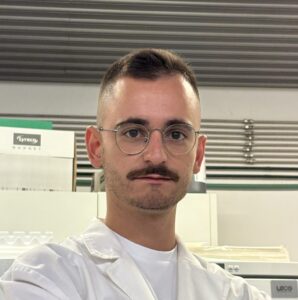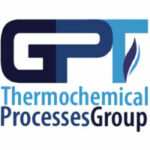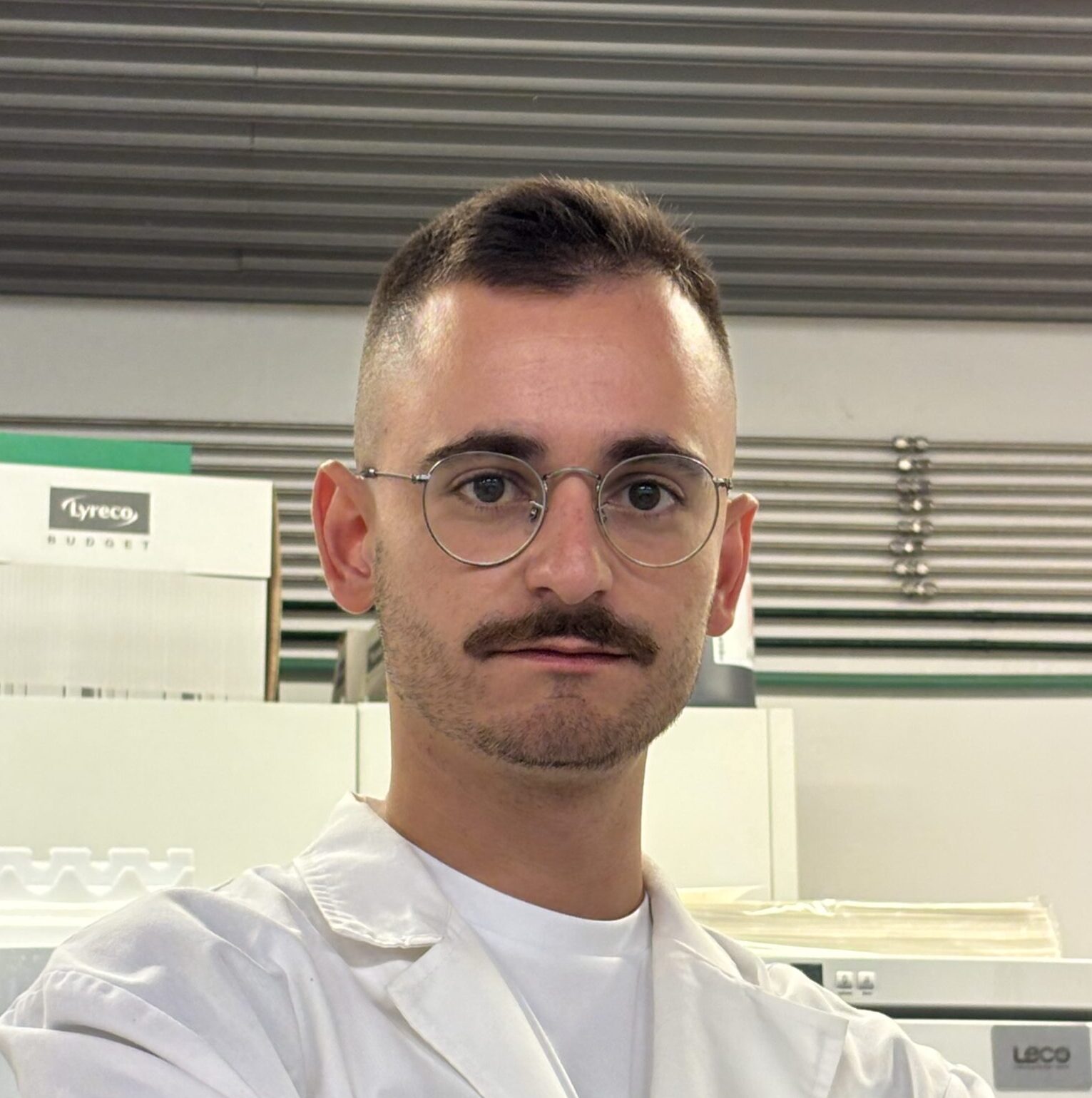
Email: alete@unizar.es
Address: c/Mariano Esquillor SN Edificio I+D+i, I3A, Zaragoza (Spain)
SOBRE MÍ
Performing my PhD Research on the valorization of biomass-derived byproducts to create renewable and sustainable products. My primary research focuses on the catalytic transformation of glycerol, the main byproduct of biodiesel production, into valuable chemicals including ketones and hydrogen.
PUBLICATIONS
2025
Lete, Alejandro; Lacleta, Francisco; García, Lucía; Ruiz, Joaquín; Arauzo, Jesús
Effect of calcination temperature and atmosphere on the properties and performance of CuAl catalysts for glycerol dehydration to acetol Artículo de revista
En: Biomass and Bioenergy, vol. 195, pp. 107725, 2025, ISSN: 0961-9534.
@article{lete_effect_2025,
title = {Effect of calcination temperature and atmosphere on the properties and performance of CuAl catalysts for glycerol dehydration to acetol},
author = {Alejandro Lete and Francisco Lacleta and Lucía García and Joaquín Ruiz and Jesús Arauzo},
url = {https://www.sciencedirect.com/science/article/pii/S0961953425001369},
doi = {10.1016/j.biombioe.2025.107725},
issn = {0961-9534},
year = {2025},
date = {2025-04-01},
urldate = {2025-04-01},
journal = {Biomass and Bioenergy},
volume = {195},
pages = {107725},
abstract = {A series of CuAl catalysts were prepared by the coprecipitation method. The objective of this study was to investigate the influence of different calcination temperatures (500, 600, and 675 °C) and calcination atmospheres (N2 or air) on the catalysts physicochemical properties and performance in the gas-phase glycerol dehydration to acetol. The catalytic tests were carried out in a fixed bed reactor at 250 °C, atmospheric pressure, and a catalyst weight to glycerol flow rate ratio (W/m) of 30 gCatalyst min gGlycerol−1. The catalysts were characterized by ICP-OES, N2 adsorption-desorption, X-ray diffraction (XRD), H2 temperature programmed reduction (H2-TPR), temperature gravimetric analysis (TGA), and elemental analysis. The characterization results revealed that both calcination temperature and calcination atmosphere influenced the textural and metallic properties. Increasing the calcination temperature lowered the reduction temperature, and decreased the surface area. The calcination atmosphere influenced the surface area and pore diameter, and the N2 atmosphere generated a larger pore diameter. The best catalytic activity was achieved by the CuAl-675-N catalyst calcined at 675 °C in a N2 atmosphere, which produced a glycerol conversion of 99.0 % and an acetol yield of 67.3 %. The superior performance could be attributed to textural properties, the Cu phase, and minimized carbon deposition, establishing it as one efficient catalyst derived from inexpensive and widely available metals. This work proposes an economical and simple technique based on calcination to improve the catalytic activity of Cu-based catalysts.},
keywords = {},
pubstate = {published},
tppubtype = {article}
}
2024
Lete, Alejandro; Raso, Raquel; García, Lucía; Ruiz, Joaquín; Arauzo, Jesús
Synthesis of ketones from glycerol and 1,2-propanediol using copper and nickel catalysts: Unraveling the impact of reaction phase and active metal Artículo de revista
En: Fuel, vol. 371, pp. 132001, 2024, ISSN: 0016-2361.
@article{lete_synthesis_2024,
title = {Synthesis of ketones from glycerol and 1,2-propanediol using copper and nickel catalysts: Unraveling the impact of reaction phase and active metal},
author = {Alejandro Lete and Raquel Raso and Lucía García and Joaquín Ruiz and Jesús Arauzo},
url = {https://www.sciencedirect.com/science/article/pii/S0016236124011499},
doi = {10.1016/j.fuel.2024.132001},
issn = {0016-2361},
year = {2024},
date = {2024-09-01},
urldate = {2024-09-01},
journal = {Fuel},
volume = {371},
pages = {132001},
abstract = {Catalysts based on nickel-aluminum and copper–aluminum were synthesized through the coprecipitation method with a Ni or Cu content of 28 mol%, expressed as Ni/(Ni + Al) or Cu/(Cu + Al). The catalysts were calcined at 675 °C and thoroughly analyzed using various characterization techniques (ICP-OES, N2 adsorption–desorption, NH3-TPD, CO2-TPD, XRD, H2-TPR and elemental analysis). The samples were tested in two different reaction systems, gas phase at atmospheric pressure and liquid phase at 34 absolute bar, to investigate the production of ketones from glycerol and 1,2-propanediol under reaction conditions of 227 °C and a mass of catalyst/reagent mass flow rate ratio (W/m) of 10 gCatalyst·min/gReagent. The characterization results revealed catalysts with high specific surface area and nickel and copper metallic particles, exhibiting good catalytic activity towards liquid products. Gas phase reactions favored the generation of acetol and carbon deposits, which were minimal in liquid phase reactions. The active metal played a crucial role, and it was demonstrated that copper, with a higher number of acidic sites, exhibited greater selectivity towards ketones than the nickel catalyst. The best performance was achieved by the CuAl catalyst in the gas phase reaction of glycerol, with a conversion of 67.0 ± 4.0 %, a carbon selectivity to acetol in the liquid products of 61.4 % and a yield to acetol of 119.8 mgAcetol/gGlycerol.},
keywords = {},
pubstate = {published},
tppubtype = {article}
}
Lete, Alejandro; García, Lucía; Ruiz, Joaquín; Arauzo, Jesús
Catalytic Conversion of 1,2-propanediol to 2-propanone: An Exploratory Study Artículo de revista
En: Chemical Engineering Transactions, vol. 109, pp. 133–138, 2024, ISSN: 2283-9216.
@article{lete_catalytic_2024,
title = {Catalytic Conversion of 1,2-propanediol to 2-propanone: An Exploratory Study},
author = {Alejandro Lete and Lucía García and Joaquín Ruiz and Jesús Arauzo},
doi = {10.3303/CET24109023},
issn = {2283-9216},
year = {2024},
date = {2024-01-01},
urldate = {2024-01-01},
journal = {Chemical Engineering Transactions},
volume = {109},
pages = {133–138},
keywords = {},
pubstate = {published},
tppubtype = {article}
}
2023
Raso, Raquel; Lete, Alejandro; García, Lucía; Ruiz, Joaquín; Oliva, Miriam; Arauzo, Jesús
Aqueous phase hydrogenolysis of glycerol with in situ generated hydrogen over Ni/Al3Fe1 catalyst: effect of the calcination temperature Artículo de revista
En: RSC Advances, vol. 13, no 8, pp. 5483–5495, 2023, ISSN: 2046-2069, (Publisher: The Royal Society of Chemistry).
@article{raso_aqueous_2023,
title = {Aqueous phase hydrogenolysis of glycerol with in situ generated hydrogen over Ni/Al3Fe1 catalyst: effect of the calcination temperature},
author = {Raquel Raso and Alejandro Lete and Lucía García and Joaquín Ruiz and Miriam Oliva and Jesús Arauzo},
url = {https://pubs.rsc.org/en/content/articlelanding/2023/ra/d2ra07929a},
doi = {10.1039/D2RA07929A},
issn = {2046-2069},
year = {2023},
date = {2023-02-01},
urldate = {2023-02-01},
journal = {RSC Advances},
volume = {13},
number = {8},
pages = {5483–5495},
abstract = {The present work studied the influence of the calcination temperature on the aqueous phase hydrogenolysis of glycerol with in situ generated hydrogen over a Ni/Al3Fe1 catalyst. The Ni/Al3Fe1 catalyst was synthesized by the co-precipitation method at 28 mol% of Ni (Ni/(Ni + Al + Fe)) and a molar ratio of Al/Fe of 3/1. The prepared catalyst was calcined at different temperatures (500–750 °C). The obtained samples were tested for the aqueous phase hydrogenolysis (APH) of glycerol and characterized by several analytical techniques (ICP-OES, H2-TPR, XRD, N2-physisorption, NH3-TPD, STEM, FESEM, and TGA). The catalyst calcined at 625 °C was selected as the best sample due to its high acidity, metal dispersion, and catalytic activity; 1,2-propanediol was the highest carbon selectivity product. In addition, it experienced lower metal leaching than the catalyst calcined at 500 °C.},
note = {Publisher: The Royal Society of Chemistry},
keywords = {},
pubstate = {published},
tppubtype = {article}
}

